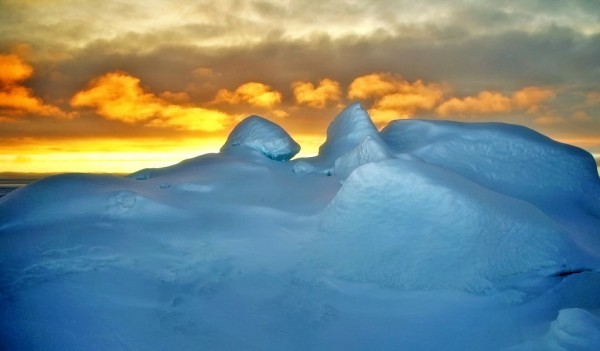By Jenia Cane, | May 01, 2017

During the 1900s, Griffin Taylor discovered the so-called frozen blood falls in Antartica.
The blood falls in Antarctica has stunned people for many years. A new study has finally revealed the reason behind this mystery.
The southernmost continent has been covered with ice. However, there is blood-like stream was noticed at Taylor Glacier.
During the 1900s, Griffin Taylor discovered the so-called frozen blood falls. It was initially believed that algae surrounding the area caused the discoloration. This was, however, refuted, this. In 2003, some scientists theorized that what looked like blood falls in Antarctica could come from the salty water and iron pulling from a 1.5 million-year-old lake.
Like Us on Facebook
This claim was supported by the latest study conducted by researchers from the Colorado College and University of Alaska Fairbanks.
The polar glacier, which measures 34 meters long, has iron-rich water which is responsible for the red deposit that flows into the West Lake Bonney.
The water apparently turns red because "the iron came contact with the air."
The location of the Antarctica blood falls, which is situated in McMurdo Dry Valleys in the Transantarctic Mountains, was discovered through the use of radar. This also helped to scan the layers of ice that comes out of the river.
The study, which was published in the Journal of Glaciology, revealed that the long-standing mystery is the result of "subglacial rivers and a subglacial lake" which are full of "brine high in iron, giving the falls its reddish tint."
"The brine remains liquid within the subglacial and englacial environments through latent heat of freezing coupled with elevated salt content," the study further stated.
There is a high concentration of salt in the area where the Antarctica blood falls was found, and saltwater has a much lower freezing point than pure water. As it releases heat, it melts the ice which causes the rivers to flow and the water to turn red.
-
Use of Coronavirus Pandemic Drones Raises Privacy Concerns: Drones Spread Fear, Local Officials Say

-
Coronavirus Hampers The Delivery Of Lockheed Martin F-35 Stealth Fighters For 2020

-
Instagram Speeds Up Plans to Add Account Memorialization Feature Due to COVID-19 Deaths

-
NASA: Perseverance Plans to Bring 'Mars Rock' to Earth in 2031

-
600 Dead And 3,000 In The Hospital as Iranians Believed Drinking High-Concentrations of Alcohol Can Cure The Coronavirus

-
600 Dead And 3,000 In The Hospital as Iranians Believed Drinking High-Concentrations of Alcohol Can Cure The Coronavirus

-
COVID-19: Doctors, Nurses Use Virtual Reality to Learn New Skills in Treating Coronavirus Patients










